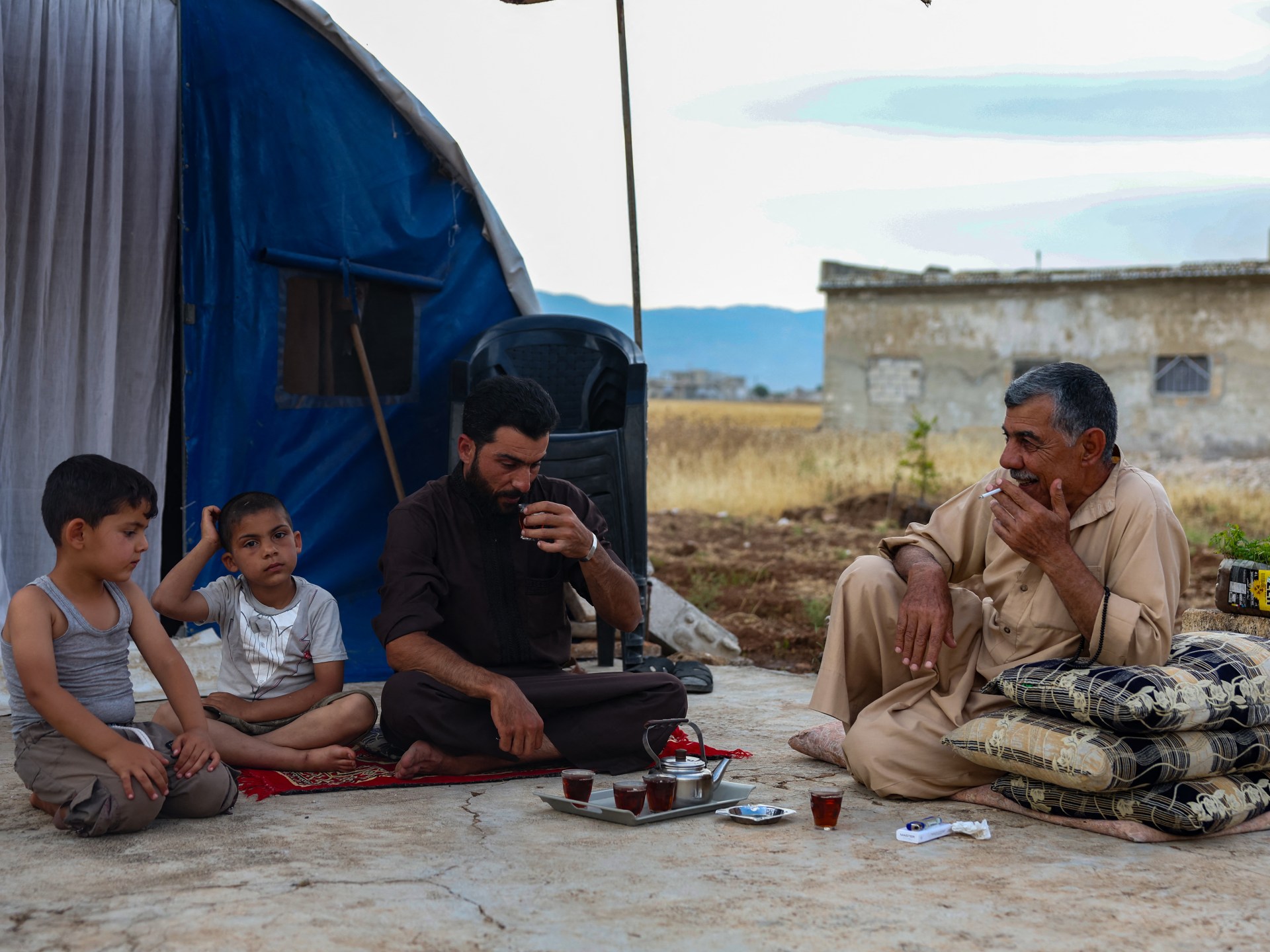Instead of settling down in a displacement camp following the overthrow of longtime ruler Bashar al-Assad, 73-year-old Aref Shamtan, opted to build a tent close to his destroyed home in northwest Syria.
Sipping tea at a tent close to his field, Shamtan said, “I feel good here, even among the rubble.”
Shamtan discovered the severely damaged village of al-Hawash, which was situated amid farmland in central Hama province, when he returned with his son after al-Assad was ousted in December.
His home’s walls and roof had shattered. However, according to Shamtan, “living in the rubble is better than living in the camps” close to the Turkish border, where he had resided since fleeing the conflict in 2011.
The International Organization for Migration reports that 1.87 million Syrians who were internally displaced or refugees have returned to their homes of origin since al-Assad’s downfall almost 14 years ago.
The greatest challenge facing returnees is attributed to the “lack of economic opportunities and essential services.”
Shamtan, who cannot afford rebuilding, recently made the decision to leave the camp with his family and his young children, and has since begun planting wheat on his property.
Al-Hawash had been under al-Assad’s control and had a border with the province of Idlib, which had become a haven for opposition fighters who helped launch the offensive that overthrew the then-president.
Even though “the village is all destroyed… and life is non-existent, lacking basic services and infrastructure, Shamtan argued, “we cannot stay in the camps,” he continued.
“We made the decision to remain here until things get better. He continued, “We are waiting for the state and organizations to assist us.” “Life is difficult.”
Abdel Ghafour al-Khatib, 72, a local official, has also reappeared after escaping from a camp close to the border in 2019.
“I only wanted to go home,” I said. I returned and pitched a stale tent because I was so excited. He asserted that living in my village is crucial.
He noted that “everyone wants to return.” In a nation where 90% of the population lives in poverty, many people are unable to afford transportation.
As he sat in his tent near what remains of his home, al-Khatib said, “There is nothing here – there are no schools, no health clinics, no water, no electricity.”
More than 500,000 people were killed and half of Syria’s pre-war population was displaced either internally or abroad, with many seeking refuge in Idlib province as a result of al-Assad’s brutal suppression of antigovernment protests in 2011.
Source: Aljazeera

Leave a Reply